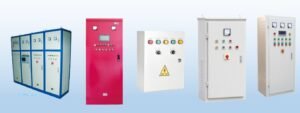
In the realm of fire protection systems, the choice of fire pump is crucial for ensuring the efficient delivery of water to extinguish fires. With the increasing complexity and diversity of applications, manufacturers have developed a wide range of fire pumps, including vertical single-stage and multistage fire pumps. Each type has its unique features and applications, and understanding their differences is essential for making an informed decision. This article will delve into the distinctions between vertical single-stage fire pumps and multistage fire pumps, focusing on their design, performance, and suitable applications.
**Design and Construction**
The primary difference between vertical single-stage and multistage fire pumps lies in their design and construction. A vertical single-stage fire pump consists of a single impeller and is typically designed for lower head applications. This type of pump is straightforward in its design, with the impeller directly connected to the motor shaft. The simplicity of this design often results in lower initial costs and easier maintenance.
On the other hand, a multistage fire pump features multiple impellers arranged in series. Each impeller adds to the total head, allowing the pump to achieve higher pressures. This design is particularly useful for applications requiring high head, such as high-rise buildings or systems with extensive piping networks. The multistage configuration enables the pump to generate significant pressure without the need for excessively large impellers or high-speed operation.
**Performance Characteristics**
In terms of performance, vertical single-stage fire pumps are generally characterized by higher flow rates and lower head. They are well-suited for applications where a large volume of water is required at a relatively low pressure. For instance, they are commonly used in industrial settings where the fire protection system needs to cover a large area quickly.
Multistage fire pumps, conversely, offer lower flow rates but much higher head. This makes them ideal for situations where water needs to be delivered to elevated levels or where the system requires a high-pressure discharge. The ability to generate high pressure is particularly important in high-rise buildings, where the pump must overcome significant static head to reach the upper floors.
**Flow and Pressure Curves**
Another notable difference is the flow and pressure curve of each pump type. Vertical single-stage fire pumps typically have a steeper curve, meaning that as the flow rate decreases, the head increases significantly. This can lead to higher pressures at lower flow rates, which might not be desirable in certain applications.
Multistage fire pumps, however, exhibit a flatter flow and pressure curve. This characteristic ensures that even at lower flow rates, the pump maintains a relatively stable head. This stability is crucial in fire protection systems, where maintaining consistent pressure at the fire hydrant or nozzle is essential to ensure effective firefighting.
**Applications and Suitability**
When it comes to applications, the choice between a vertical single-stage and a multistage fire pump depends largely on the specific requirements of the system. Vertical single-stage pumps are often used in commercial buildings, industrial plants, and other facilities where the fire protection system does not require extremely high head. Their ability to deliver large volumes of water quickly makes them suitable for covering expansive areas.
Multistage fire pumps are more commonly found in high-rise buildings, large-scale industrial complexes, and other applications where high head is necessary. They are also used in systems with extensive piping networks, where the pressure loss in the pipes needs to be compensated for by the pump.

**Maintenance and Cost Considerations**
From a maintenance perspective, vertical single-stage fire pumps generally require less maintenance due to their simpler design. Fewer components mean fewer potential points of failure, which can lead to lower maintenance costs over time. However, they may not be as efficient as multistage pumps, especially in applications where high head is required.
Multistage fire pumps, while more complex, are designed to be highly efficient and reliable. Their robust construction and ability to handle high pressures make them suitable for demanding applications. However, the initial cost and maintenance requirements are typically higher than those of single-stage pumps.
**Conclusion**
In conclusion, the choice between a vertical single-stage fire pump and a multistage fire pump depends on the specific needs of the fire protection system. Vertical single-stage pumps offer high flow rates and are suitable for applications with lower head requirements, while multistage pumps provide high head and are ideal for systems requiring significant pressure. By understanding the differences in design, performance, and applications, users can make an informed decision that ensures the optimal performance and reliability of their fire protection system. It is crucial to consider factors such as head, flow rate, system design, and maintenance when selecting the appropriate fire pump for a given application.


